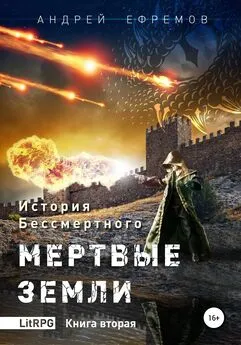Андрей Журавлёв - Сотворение Земли. Как живые организмы создали наш мир
- Название:Сотворение Земли. Как живые организмы создали наш мир
- Автор:
- Жанр:
- Издательство:Альпина нон-фикшн
- Год:2018
- Город:Москва
- ISBN:978-5-9614-5294-5
- Рейтинг:
- Избранное:Добавить в избранное
-
Отзывы:
-
Ваша оценка:
Андрей Журавлёв - Сотворение Земли. Как живые организмы создали наш мир краткое содержание
О том, как формировалась наша планета — такая, какой мы ее знаем, — книга Андрея Журавлева, палеонтолога, доктора биологических наук, профессора кафедры биологической эволюции биологического факультета МГУ.
Сотворение Земли. Как живые организмы создали наш мир - читать онлайн бесплатно ознакомительный отрывок
Интервал:
Закладка:
Schwartzman D. W., Lineweaver C. H. 2004. The hyperthermophilic origin of life revisited // Biochemical Society Transactions, 32, 168–71.
Searle R., ed. 2016. Mid-Ocean Ridges. Cambridge: Cambridge Univ. Press, 330 p.
Sergeev V. N., Knoll A. H., Vorob’eva N. G., Sergeeva N. D. 2016. Microfossils from the lower Mesoproterozoic Kaltasy Formation, East-European Platform // Precambrian Research , 278, 87–107.
Shih P. M., Hemp J., Ward L. M., Matzke N. J., Fischer W. W. 2017. Crown group Oxyphotobacteria postdate the rise of oxygen // Geobiology , 15, 19–29.
Som S. M., Catling D. C., Harnmeijer J. P., Polivka P. M., Buick R. 2012. Air density 2.7 billion years ago limited to less than twice modern levels by fossil raindrop imprints // Nature , 484, 359–62.
Som S. M. et al. 2016. Earth air pressure 2.7 billion years ago constrained to less than half of modern levels // Nature Geoscience, DOI: 10.1038/NGEO2713
Strother P. K., Battison L., Brasier M. D., Wellman C. H. 2011. Earth’s earliest non-marine eukaryotes // Nature , 473, 505–9.
Stüeken E. E. et al. 2016. Modelling p N 2through geological time: Implications for planetary climates and atmospheric biosignatures // Astrobiology , 16 (12). DOI: 10.1089/ast.2016.1537
Stuiver M., Kromer B., Becker B., Ferguson C. W. 1986. Radiocarbon age calibration back to 13, 300 years BP and the 14C age matching of the German oak and US bristlecone pine chronologies // Radiocarbon, 28, 969–79.
Sugitani K. et al. 2015. Early evolution of large micro-organisms with cytological complexity revealed by microanalyses of 3.4 Ga organic-walled microfossils // Geobiology , 13, 507–21.
Tang Q. et al. 2013. Organic-walled microfossils from the early Neoproterozoic Liulaobei Formation in the Huainan region of North China and their biostratigraphic significance // Precambrian Research, 236, 157–81.
Tartèse R., Chaussidon M., Gurenko A., Delarue F., Robert F. 2017. Warm Ar oceans reconstructed from oxygen isotope composition of early-life remnants // Geochemical Perspective Letters, 3, 55–65.
Tziperman E., Halevy I., Johnston D. T., Knoll A. H., Schrag D. P. 2011. Biologically induced initiation of Neoproterozoic snowball-Earth events // Proceedings of the National Academy of Sciences of the USA, 108, 15091–6.
Tyler S. A., Barghoorn E. S. 1954. Occurrence of structurally preserved plants in Precambrian rocks of the Canadian Shield // Science , 119, 606–8.
Ueno Y. et al. 2009. Geological sulphur isotopes indicate elevated OCS in the Archean atmosphere, solving faint young sun paradox // Proceedings of the National Academy of Sciences of the USA, 106, 14784–9.
Valley J. W., Peck W. H., King E. M., Wilde S. A. 2002. A cool early Earth // Geology , 30, 351–4.
Wacey D., Kilburn M. R., Saunders M., Cliff J., Brasier M. D. 2011. Microfossils of 3.4-billion-year-old rocks of Western Australia // Nature Geoscience , 4, 698–702.
Wacey D. et al. 2012. Taphonomy of very ancient microfossils from the ~3400 Ma Strelley Pool Formation and ~1900 Ma Gunflint Formation // Precambrian Research, 220–221, 234–250.
Warren J. K. 2016. Evaporites: A Compendium. Berlin: Springer, 1600 p.
Wegener A. 1922. Die Entstehung der Kontinente und Ozeane (On the Origin of Continents and Oceans. Engl. transl., 1924). London: Methuen, 212 p.
White R. A. III et al. 2016. Metagenomic analysis suggests modern freshwater microbialites harbor a distinct core microbial community // Frontiers in Microbiology , 6, 1531. DOI: 10.3389/fmicb.2015.01531
Wilde S. A., Valley J. W., Peck W. H., Graham C. M. 2001. Evidence from detrital zircons for the existence of continental crust and oceans on the Earth 4.4 Gyr ago // Nature , 409, 175–8.
Williams G. E. 2000. Geological constraints on the Precambrian history of Earth’s rotation and the Moon’s orbit // Reviews of Geophysics , 38, 37–59.
Wilson J. T. 1966. Did the Atlantic Ocean close and re-open again? // Nature , 211, 676–81.
Xiao S., Kaufman A. J., eds. 2006. Neoproterozoic Geobiology and Paleobiology. Berlin; Heidelberg; Dordrecht: Springer, 300 p. ( Topics in Geobiology Series, 27).
Zaremba-Niedzwiedzka K. et al. 2016. Asgard archaea illuminate the origin of eukaryotic cellular complexity // Nature, 541, 353–8.
Zhu S. et al. 2016. Decimetre-scale multicellular eukaryotes from the 1.56-billion-year-old Gaoyuzhuang Formation in North China // Nature Communications , 7, 11500. DOI: 10.1038/ncomms11500
Бурзин М. Б. Древнейший хитридиомицет (Mycota, Chytridiomycetes incertae sedis) из верхнего венда Восточно-Европейской платформы // Фауна и экосистемы геологического прошлого. [Отв. ред. Б. С. Соколов, А. Б. Ивановский]. — М.: Наука, 1993. C. 21–33.
Бурзин М. Б. Микробные бентосные сообщества позднего венда // Проблемы доантропогенной эволюция биосферы. [Отв. ред. А. Ю. Розанов]. — М.: Наука, 1993. С. 282–93.
Иванцов А. Ю. Новая реконструкция кимбереллы — проблематического вендского многоклеточного животного // Палеонтологический журнал. 2009. № 6. С. 3–12.
Иванцов А. Ю. Следы питания проартикулят — вендских многоклеточных животных // Палеонтологический журнал. 2011. № 3. С. 3–13.
Казаков А. В. Химическая природа фосфатного вещества фосфоритов и их генезис. — Л.: Изд-во Леноблисполкома и Ленсовета, 1937. (Тр. НИИ по удобрениям и инсектофунгицидам, Т. 139).
Семихатов М. А., Комар В. А., Серебряков С. Н. Юдомский комплекс стратотипической местности. — М.: Наука, 1970. (Тр. ГИН АН СССР, вып. 210).
Соколов Б. С. О возрасте древнейшего осадочного покрова Русской платформы // Известия АН СССР. Сер. геологическая. 1952. № 5. С. 21–31.
Соколов Б. С. Очерки становления венда. — М.: КМК Лтд., 1998.
Федонкин М. А. Органический мир венда. — М.: ВИНИТИ, 1983. (Итоги науки и техники. Стратиграфия. Палеонтология. Т. 12).
Федонкин М. А. Бесскелетная фауна венда и ее место в эволюции Metazoa. — М.: Наука, 1987. (Тр. ПИН АН СССР. Т. 226).
Algeo T. G., Luo G. M., Song H. Y., Lyons T. W., Canfield D. E. 2015. Reconstruction of secular variation in seawater sulphate concentrations // Biogeosciences , 12, 2131–51.
Arvidson R. S., Mackenzie F. T. 1997. Tentative kinetic model for dolomite precipitation rate and its application to dolomite distribution // Aquatic Geochemistry , 2, 273–98.
Bailey J. V. et al. 2013. Filamentous sulphur bacteria preserved in modern and ancient phosphatic sediments: implications for the role of oxygen and bacteria in phosphogenesis // Geobiology , 11, 397–405.
Bengtson S., Rasmussen B., Krapez B. 2007. The Paleoproterozoic megascopic Stirling biota // Paleobiology, 33, 351–81.
Bjerrum C. J., Canfield D. E. 2011. Towards a quantitative understanding of the late Neoproterozoic carbon cycle // Proceedings of the National Academy of Sciences of the USA, 108, 5542–7.
Bobrovskiy I., Hope J. M., Krasnova A., Ivantsov A., Brocks J. J. 2018. Molecular fossils from organically preserved Ediacara biota reveal cyanobacterial origin for Beltanelliformis // Nature Ecology & Evolution. DOI: 10.1038/s41559-017-0438-6
Bontognali T. R. R. et al. 2010. Dolomite formation within microbial mats in the coastal sabkha of Abu Dhabi (United Arab Emirates) // Sedimentology , 57, 824–44.
Bowyer F., Wood R. A., Poulton S. W. 2017. Controls on the evolution of Ediacaran metazoan ecosystem: A redox perspective // Geobiology , 15, 516–51.
Brasier M. D., Antcliffe J. B. 2008. Dickinsonia from Ediacara: A new look at morphology and body construction // Palaeogeography, Palaeoclimatology, Palaeoecology, 270, 311–323.
Brasier M. D., Antcliffe J. B. 2009. Evolutionary relationships within the Avalonian Ediacara biota: new insights from laser analysis // Journal of the Geological Society of London, 166, 2, 363–84.
Brasier M. D., Callow R. H. T. 2007. Changes in the patterns of phosphatic preservation across the Precambrian — Cambrian transition // Memoirs of the Association of Australasian Palaeontologists , 34, 377–89.
Brennan S. T., Lowenstein T. K., Horita J. 2004. Seawater chemistry and the advent of biocalcification // Geology , 32, 473–6.
Buckland W. 1829. On the discovery of coprolites, or fossil faeces, in the Lias at Lyme Ridges, and in other formations // Transactions of the Geological Society of London , 3, 223–36.
Buick R., Des Marais D. J., Knoll A. H. 1995. Stable isotopic composition of carbonates from the Mesoproterozoic Bangemall Group, northwestern Australia // Chemical Geology , 123, 153–71.
Campbell I. H., Squire R. J. 2010. The mountains that triggered the Late Neoproterozoic increase in oxygen: The Second Great Oxidation Event // Geochimica et Cosmochimica Acta, 74, 4187–206.
Chen L., Xiao S., Pang K., Zhou C., Yuan X. 2014. Cell differentiation and germ-soma separation in Ediacaran animal-like fossils // Nature , 516, 238–41.
Cook P. J., Shergold J. H. 1984. Phosphorus, phosphorites and skeletal evolution at the Precambrian — Cambrian boundary // Nature , 308, 231–36.
Creveling J. R. et al. 2014. Phosphorus sources for phosphatic Cambrian carbonates // Geological Society of America Bulletin , 126, 145–63.
Cumming V. M., Poulton S. W., Rooney A. D., Selby D. 2013. Anoxia in the terrestrial environment during the late Mesoproterozoic // Geology , 41, 583–6.
Cunningham J. A. et al. 2017. The Weng’an Biota (Doushantuo Formation): an Ediacaran window on soft-bodied and multicellular microorganisms // Journal of the Geological Society. DOI: 10.1144/jgs2016–142
Glaessner M. F. 1984. The Down of Animal Life: A Biohistorical Study. Cambridge: Cambridge Univ. Press. 244 p.
Grazhdankin D. 2014. Patterns of evolution of the Ediacaran soft-bodied biota // Journal of Paleontology , 88, 269–83.
Читать дальшеИнтервал:
Закладка:
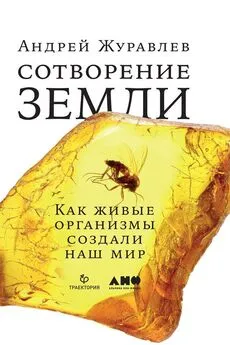

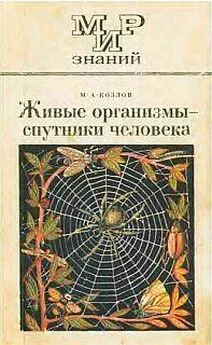
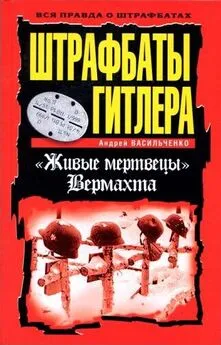
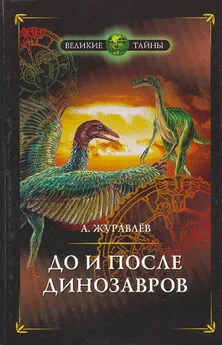


![Андрей Максимов - Самоубийство Земли [Повести и рассказы]](/books/1059571/andrej-maksimov-samoubijstvo-zemli-povesti-i-rass.webp)
